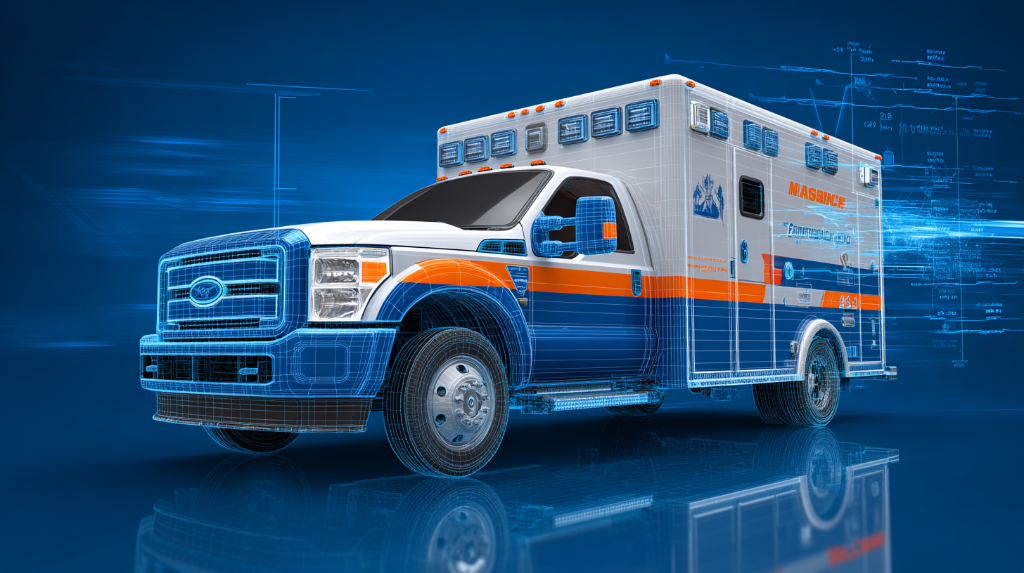Tennessee has made a pivotal advancement in the realm of emergency medical services (EMS) by connecting its licensure system to the National EMS Coordinated Database. This significant move enhances mobility for over 20,000 EMS professionals in the state, allowing them to provide vital services across state lines. Such developments not only streamline operations within the EMS sector but also reflect a broader commitment to improving healthcare delivery in the United States. In this blog post, we will explore the implications of this connectivity, the challenges it addresses, and how EMS professionals can leverage this opportunity for better operational efficiency.
Understanding EMS Licensure Connectivity
The concept of EMS licensure connectivity refers to the ability of EMS professionals to practice across different states with minimal bureaucratic hurdles. Traditionally, each state had its own licensure requirements, which could significantly hinder the mobility of EMS clinicians. The establishment of a national database seeks to rectify this by standardizing procedures and providing a unified platform for information exchange.
For instance, when an EMS provider moves from one state to another, the licensure process can often prove cumbersome and time-consuming. With Tennessee’s recent integration, EMS personnel can more easily obtain licensure in other states where they may wish to practice, thereby addressing a critical challenge within the healthcare sector—mobility. In achieving this, Tennessee stands as a model for other states to emulate, fostering an environment where EMS professionals can seamlessly transition and offer care where it’s most needed.
The Key Challenges Addressed
Mobility remains a pressing challenge in the EMS sector. Due to varying state regulations, EMS professionals often face complex licensure processes that are not only frustrating but can also lead to service gaps in emergency care delivery. Here are a few key challenges that the recent developments in Tennessee address:
- Licensure Delays: Traditional licensure can take weeks or even months, delaying essential services.
- Inconsistent Regulations: Different states have different requirements, creating confusion for EMS professionals.
- Workforce Shortages: Mobility challenges can exacerbate staffing shortages, particularly in regions requiring assistance.
- Emergency Response Times: Without an efficient licensure process, response times can lag, impacting patient outcomes.
Tennessee’s commitment to integrating its EMS licensure system to the National EMS Coordinated Database not only mitigates these issues but also sets a precedent for national reform.
The Role of the National EMS Coordinated Database
Established to simplify the licensure process for EMS personnel across state lines, the National EMS Coordinated Database functions as a centralized hub of information. This enhancement allows for real-time access to licensure information and eligibility verification. For EMS professionals, this means they can:
- Quickly Verify Licensure: They can instantly confirm whether a clinician is licensed and qualified to practice in a particular state.
- Streamline Reciprocity: The process of obtaining mutual recognition of licensure is simplified.
- Enhance Workforce Mobility: Clinicians can transition more fluidly to states facing staffing shortages.
Moreover, data from this database can assist healthcare administrators in making informed staffing decisions. Through Pulivarthi Group’s staffing solutions, organizations can leverage these insights to deploy qualified EMS professionals when and where they are needed most.
Implications for EMS Professionals
The changes made in Tennessee will have far-reaching implications for EMS professionals. Improved mobility will likely result in increased job opportunities across state borders. Many clinicians may find themselves able to work in areas that were previously unavailable to them due to licensure restrictions. Additionally, the operational efficiencies gained through this connectivity will enable EMS providers to focus on delivering patient care rather than navigating administrative hurdles.
Furthermore, enhanced mobility aligns with trends in the broader healthcare landscape where the demand for agile and adaptable healthcare personnel is at an all-time high. EMS professionals with the ability to cross state lines can play a crucial role in disaster response, emergency management, and public health initiatives, reinforcing the idea that timely care can significantly save lives.
Challenges Remain: The Path Forward
While the integration of Tennessee’s EMS licensure system into the national database marks a positive step forward, it is crucial to acknowledge the ongoing challenges that remain. For instance, there are questions around technology infrastructure, data security, and the need for continued education about changes in licensure processes among EMS professionals.
To address these challenges, EMS organizations and administrators can take the following steps:
- Invest in Training: Provide training for EMS professionals on how to navigate the new licensure portals and understand national standards.
- Enhance Communication: Regularly communicate updates on licensure processes and changes across state lines.
- Advocate for Legislative Support: Work with local and federal lawmakers to promote policies that support licensure reciprocity.
By taking these actions, stakeholders can help to ensure that the benefits of enhanced EMS licensure mobility are realized fully while preparing for any related challenges that may arise.
Conclusion: A Bright Future for EMS in Tennessee
The decision for Tennessee to connect its EMS licensure system to the National EMS Coordinated Database is a clear demonstration of a commitment to increasing mobility for EMTs and paramedics. By enhancing licensure connectivity, Tennessee not only paves the way for improved operational efficiencies but also embodies a forward-thinking approach to healthcare delivery that prioritizes the needs of patients and professionals alike.
As we move forward, it’s imperative for EMS professionals, healthcare administrators, and stakeholders to stay informed and engaged with these ongoing developments. Embracing this change will contribute to a more mobile, flexible, and responsive EMS sector. At Pulivarthi Group, we are dedicated to supporting EMS organizations in navigating these challenges and maximizing the benefits of licensure mobility. To learn more about how your organization can enhance EMS licensure capabilities, reach out to us today.

